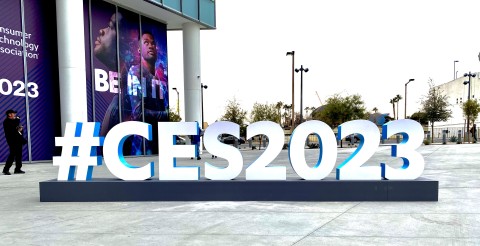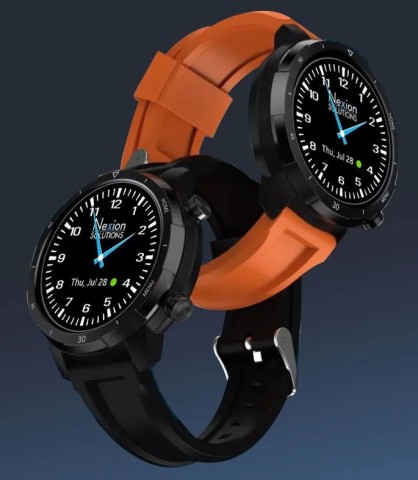It’s the same drill every year: I return from CES and the first question everyone asks is, “What was the best thing you saw?” Or “The most exciting thing.” Or “The most incredible thing.” Sometimes, the answer is obvious: One year, it was a smart cane that not only has fall detection and alert capabilities, but which also tracks the user’s gait over time. Last year, it was the use of VR for telehealth. But this year was different. It was less about the algorithms and more about the impact; less about the peak of development and more about the drilling down to solve essential human issues. So, for this year’s annual CES Wrap-Up, we’ll focus on three topics: farming, healthcare, and protecting victims of domestic violence. All were on display at CES last week, each addressed by connected tech.
Let’s start with ag. Earlier in this series, I shared how John Deere has combined cloud computing, imaging, AI, and autonomous systems to create “see and spray” functions that enable equipment to image a plant, determine whether it is friend or foe, and then spray a precise amount of herbicide or fertilizer from the back end of the same vehicle. The tolerances are down to precision metrics with applications coming in at about 0.2 ml, and the sum of it is that instead of blanketing a field with chemicals, use is reduced by about 60%. Those figures would be impressive by themselves, but the potential impact on commodities pricing is compelling: According to the American Farm Bureau Federation (a longtime friend of NTCA’s Smart Rural Community initiative), chemicals, fertilizer, and seeds account for 17.5% of total on-farm expenditures. In real dollars, that was a forecasted $32 billion in 2022. Penn State University reports that nitrogen prices doubled from 2020 to 2021; potash (used as fertilizer to activate enzymes) increased 133%; and monoammonium phosphate (MAP), a phosphorus and nitrogen blend, increased 100% in the same period. Accordingly, using nearly 2/3 less chemicals can have tremendous impacts on on-farm production costs that are sizeable inputs to ultimate food costs.
Let’s move over to healthcare. For example, Xander smart glasses that display captions in real-time for hearing impaired users. And, while we have discussed artificial intelligence, Dr. Bobby Mukkamala, immediate past chair of the American Medical Association, described augmented intelligence with a hypothetical: A patient presents with an ear infection. The charts might reveal that the patient visited five years earlier with a similar infection but offer little guidance to diagnose the current ailment. Left unnoticed is that the patient lives near a lake. And that lake has elevated levels of a bacteria that cause infection. But if the examining physician had that information at the ready, initial questions might include, “Do you frequently swim in the lake?” In an office aided by augmented intelligence, analytics would assess the patient address and zip code and associate it not only with the lake but also the conditions in the water, including the elevated risk of infection. Augmented intelligence does not replace the doctor, but rather enables the doctor to work more efficiently and facilitate better outcomes. This, too, is technology is in the service of better outcomes.
And finally, NightWatch. Conceived by start-up Nexion Solutions, NightWatch is a GPS-enabled smartwatch designed to protect victims of domestic abuse and vulnerable witnesses in criminal cases. The system uses a Samsung smartwatch that has been stripped of all apps except emergency call capabilities, fall detection, a heart rate monitor, and audio recording. In the event a user feels threatened, s/he can trigger an emergency call to dedicated law enforcement without routing through the regular 911 call center. Additionally, the case file is uploaded automatically so that first responders have access to all relevant information as emergency services are dispatched. If the user is pushed or tackled, the fall detection sounds the same alarm. And, if the user’s heart rate falls beneath a pre-set threshold, emergency responders are dispatched, as well. In all instances, the device automatically creates an audio recording of the surrounding event, which can be used as evidence in subsequent prosecutorial proceedings. Poverty plays a critical role in intimate partner violence (IPV): victims with sufficient resources to establish safer living arrangements tend to leave abusive situations. Those with little or no income, particularly when children are in the household, tend to stay in dangerous situations. To note a specific rural context, women in small rural areas report IPV at rates of 22.5%, as compared to 15.5% for urban peers. NightWatch won an 2023 CES Innovation award and is being trialed by the Milwaukee Police Department. To be sure, there are software specs that are unique to NightWatch. But overall, the story is less about the fundamental technology (Samsung released its first smartwatch in 2013) and more about the identification of a problem and the thoughtful adjustment and application of technology to improve that human condition.
And maybe that’s where CES 2023 leaves me. Maybe technology develops in a series of peaks and plateaus. The first-generation iPhone was released in 2007. Successive iterations feature faster processing, better cameras, and other improvements, and maybe a next major development will be as groundbreaking as the first. And to answer, “Why does NTCA go to CES,” yes, there is a component of finding the technology that can be particularly useful in rural spaces, but overall, technology is in many respects universal. I don’t think we need to expend a ton of energy placing particular apps or devices into rural or urban silos. If we start with the perspective articulated in the universal service provisions of Telecommunications Act of 1996, that people in rural and insular areas should have access to communications services that are reasonably comparable to those that are available in more densely populated urban areas, then we arrive at a similar conclusion for technology: There is no reason to differentiate between rural and urban physicians and their ability to render more accurate diagnoses. Improved monitoring, management of chronic conditions, increased patient compliance, lower costs, and better outcomes are good for all patients no matter where they live. It’s just that we find particularly compelling use cases in rural spaces that correspond to health care provider shortage areas.
In similar vein, victims of domestic abuse and at-risk witnesses can unfortunately be found throughout the country. So NightWatch is not a particularly rural solution, per se. But where IPV rates are 45% higher in rural areas than urban areas, then that type of device does present, unfortunately, particular usefulness.
Cameras, imaging, AI, augmented intelligence, and smart monitoring. Conceptually, nothing we haven’t seen before. But as applied to ag, health care, and domestic abuse, CES showcased examples of ingenuity and vision to adapt, envision, and execute. I’d say that, evidenced in so many new applications and products, was the best thing I saw this year.



